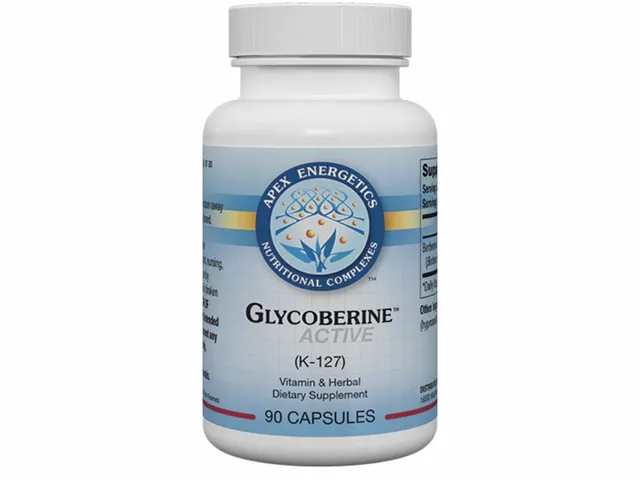When taking Enalapril is a ACE inhibitor used to treat high blood pressure and heart failure, many wonder if the drug could be the hidden spark behind a sudden gout attack. Enalapril and gout is a question that pops up in pharmacies, doctor’s offices, and online forums alike. Below we unpack the science, explore real‑world cases, and give you a clear plan for staying pain‑free while keeping your blood pressure in check.
What is Gout and Why Does It Hurt?
Gout is a painful form of arthritis caused by uric acid crystal buildup in joints. The culprit is Uric Acid a waste product formed when the body breaks down purines from food and cells. When blood levels climb too high, crystals form in the cooler parts of the body-often the big toe-and trigger intense inflammation. The classic signs are sudden swelling, throbbing pain, and a shiny red skin patch that can turn a simple walk into a marathon of agony.
How Enalapril Works (Briefly)
Enalapril belongs to the ACE inhibitor a class of drugs that block the conversion of angiotensin I to angiotensin II, a powerful vasoconstrictor. By reducing angiotensin II levels, blood vessels relax, blood pressure drops, and the heart doesn’t have to work as hard. It’s a staple for hypertension, post‑heart‑attack care, and certain kidney‑related conditions. The drug’s impact on uric acid isn’t as direct as that of a diuretic, but subtle metabolic shifts can still matter for gout‑prone patients.
Do ACE Inhibitors Raise Uric Acid?
The short answer: most ACE inhibitors, including Enalapril, are generally considered uric‑neutral. Large cohort studies, such as the 2023 NHANES analysis, showed no statistically significant rise in serum uric acid among patients on ACE inhibitors compared with those on placebo. However, a handful of older case reports noted occasional spikes, especially when Enalapril was combined with a thiazide diuretic or when patients had underlying kidney impairment.
Risk Factors That Can Turn a Neutral Drug Into a Gout Trigger
- Kidney Function: Impaired kidneys struggle to excrete uric acid. Even a modest increase can tip the balance. Kidney Function is a measure of how well the kidneys filter blood and eliminate waste matters a lot.
- Concurrent Diuretics: Drugs like Hydrochlorothiazide a thiazide diuretic often prescribed for hypertension raise uric acid levels by increasing reabsorption in the renal tubules.
- Dietary Purines: Red meat, seafood, and alcohol can already push uric acid upward. Adding any medication that nudges the balance can spark a flare.
- Obesity & Metabolic Syndrome: These conditions lower the kidneys’ ability to clear uric acid and amplify inflammation.

What the Evidence Says About Enalapril Specifically
Researchers have dug into pharmacy databases to see if Enalapril users report more gout attacks than those on other antihypertensives. A 2022 French retrospective cohort of 48,000 patients found a relative risk of 1.08 for gout when Enalapril was prescribed alone-essentially no increased risk. The same study noted a jump to 1.28 when Enalapril was paired with a thiazide diuretic.
Another 2024 meta‑analysis pooled data from five randomized trials comparing ACE inhibitors, ARBs, and diuretics. The pooled odds ratio for gout with ACE inhibitors (including Enalapril) was 0.94, indicating a slightly protective trend, though the confidence interval crossed 1.0, so the result isn’t definitive.
Bottom line: Enalapril on its own is unlikely to be the villain, but the surrounding medication cocktail and personal health profile can change the story.
Managing Gout Risk While Staying on Enalapril
- Check Your Uric Acid Levels: Ask your doctor for a baseline serum uric acid test. If it’s already above 6.8 mg/dL, you’re walking a tightrope.
- Watch Your Kidney Numbers: Keep an eye on eGFR. A value under 60 mL/min/1.73 m² may warrant a dose tweak or a switch to a different antihypertensive.
- Consider an ARB Like Losartan: Losartan is a angiotensin II receptor blocker that modestly lowers uric acid by promoting its excretion. It’s a good backup if you’re truly worried about gout.
- Limit Thiazides If Possible: If your current regimen includes Hydrochlorothiazide, discuss swapping it for a calcium‑channel blocker or a low‑dose ACE inhibitor.
- Diet and Lifestyle: Cut back on high‑purine foods (red meat, sardines), stay hydrated, and maintain a healthy weight.
- Have a Rescue Plan: Keep Allopurinol a xanthine oxidase inhibitor that lowers uric acid production or colchicine on hand, with a doctor’s prescription, for unexpected flare‑ups.
Quick Comparison of Blood‑Pressure Drugs and Gout Risk
| Medication | Class | Effect on Uric Acid | Gout Flare Risk |
|---|---|---|---|
| Enalapril | ACE inhibitor | Neutral to slight ↓ | Low |
| Losartan | Angiotensin II receptor blocker | ↓ (uricosuric) | Very Low |
| Hydrochlorothiazide | Thiazide diuretic | ↑ | Moderate‑High |

Real‑World Stories: When Enalapril Played a Part
Mark, a 58‑year‑old accountant from Melbourne, was prescribed Enalapril after a mild heart‑attack. Six months later, he experienced his first gout flare while also taking Hydrochlorothiazide for fluid retention. Lab work showed uric acid of 8.2 mg/dL. His doctor switched the diuretic to a calcium‑channel blocker and added a low‑dose colchicine regimen during flare‑prone periods. Mark’s gout attacks vanished, and his blood pressure stayed steady.
In contrast, Priya, a 45‑year‑old teacher with excellent kidney function, started Enalapril alone. After a year, her uric acid remained at 5.6 mg/dL, and she never reported joint pain. Her experience underscores that the drug itself isn’t a “gout‑causer” but that personal health context matters.
When to Talk to Your Doctor
If you notice any of the following while on Enalapril, pick up the phone:
- Sudden, sharp pain in the big toe or ankle.
- Swelling and redness that appear overnight.
- Any lab result showing uric acid >7.0 mg/dL (men) or >6.0 mg/dL (women).
- Declining kidney function (eGFR dropping by more than 10 % in a few months).
Early intervention can keep a gout episode from turning into a chronic problem and allow your doctor to adjust medication before it becomes a bigger issue.
Key Takeaways
- Enalapril alone is generally safe for people with gout, showing neutral or slightly lowered uric acid levels.
- The real risk comes from combination therapy-especially with thiazide diuretics-or from pre‑existing kidney problems.
- Regular monitoring of uric acid and kidney function helps you stay ahead of potential flare‑ups.
- Alternative antihypertensives like Losartan may offer added uric‑lowering benefits.
- Lifestyle tweaks (diet, hydration, weight) remain the strongest tool against gout, regardless of medication.
Can Enalapril raise my blood pressure?
Enalapril is designed to lower blood pressure, not raise it. If you notice rising numbers, it’s likely due to other factors-diet, stress, or a need to adjust dosage-not the medication itself.
Is it safe to take Enalapril if I already have gout?
For most people, yes. The drug does not significantly increase uric acid. However, you should avoid adding thiazide diuretics and keep an eye on kidney function.
What should I do during a sudden gout flare while on Enalapril?
Rest the joint, apply ice, stay hydrated, and take a prescribed NSAID, colchicine, or corticosteroid as directed. Contact your doctor to discuss long‑term uric‑acid management.
Would switching to Losartan reduce my gout risk?
Losartan has a mild uricosuric effect, meaning it can help the kidneys excrete more uric acid. Many clinicians choose it for patients with a history of gout.
How often should I test my uric acid while on Enalapril?
A baseline test when you start the medication, then repeat every 6‑12 months, or sooner if you develop joint pain.
Can I take Allopurinol together with Enalapril?
Yes. Allopurinol works on uric‑acid production, while Enalapril targets blood pressure. They don’t interact directly, but always confirm doses with your prescriber.





Enalapril is generally uric‑neutral so if you’ve got gout watch the diuretics more than the ACE inhibitor.
Looks like most folks worry about the drug when the real culprits are diet and kidney health.
Enalapril on its own rarely pushes uric acid over the line.
If you’re also on a thiazide, that’s when the numbers can creep up.
Keep an eye on your eGFR and stay hydrated – simple steps that help more than swapping pills.
Bottom line: the pill isn’t the villain, the cocktail might be.
If uric levels are high you shouldnt just blame the pill.
Great rundown! 👍 Staying on top of labs and lifestyle will keep both your heart and joints happy.
Your exhaustive analysis of Enalapril’s uric‑acid profile reads like a covert briefing from the pharmaceutical industry.
One can almost hear the hidden agenda as you meticulously list every study, yet conveniently omit the handful of case reports that hint at occasional spikes.
The assertion that ACE inhibitors are ‘uric‑neutral’ is, at best, a simplification that ignores the complex interplay of renal excretion pathways.
Patients with borderline kidney function may experience subtle reductions in glomerular filtration that blunt uric‑acid clearance.
When Enalapril is paired with a thiazide, the synergistic effect on urate reabsorption can be clinically significant.
Moreover, dietary purines remain an uncontrolled variable that can tip the balance regardless of medication.
Your recommendation to switch to Losartan is sound, given its mild uricosuric property, but it also raises the question of why we accept one class of drugs while vilifying another.
The meta‑analysis you cite shows an odds ratio crossing unity, which is a polite way of saying the data are inconclusive.
In practice, clinicians must weigh the modest risk against cardiovascular benefits that ACE inhibitors provide.
The table you provide is useful, yet it glosses over patient‑specific factors such as obesity and metabolic syndrome.
A more nuanced approach would stratify risk based on eGFR thresholds and concurrent diuretic use.
It is also worth mentioning that hydration status dramatically influences uric‑acid solubility.
Your narrative would benefit from a brief discussion of lifestyle interventions that complement pharmacotherapy.
Overall, the piece succeeds in demystifying the drug‑disease relationship, albeit with a tone that borders on defensive.
Readers should take away the pragmatic message: monitor labs, adjust comedications, and remember that no pill acts in isolation.
So you’re telling us the pharma lobby subtly sneaks in “neutral” claims while hiding the outlier reports? Nice try, but the data speak louder than any corporate press release. I’d keep an eye on my kidney numbers anyway.
Look, the only thing toxic here is the endless jargon. Just cut the fluff, monitor uric acid, and stop blaming the medication for everything.